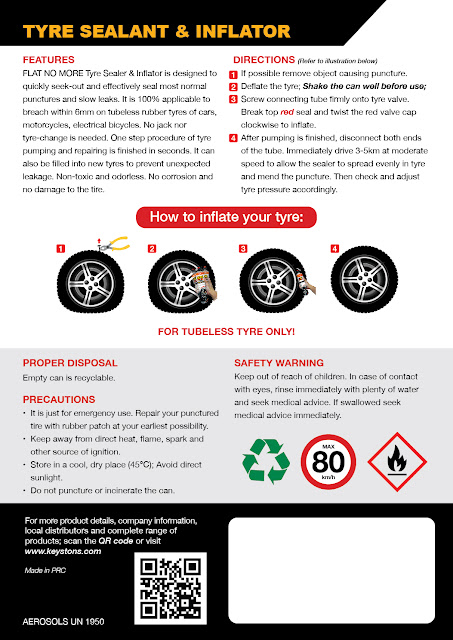Slow tire leaks can have a variety of causes, but they may creep up on you quickly and compromise your safety on the road. Understanding the causes and diagnosis will help keep you safe. If you believe you have a slow leak in your tire or if your tire is losing air, it’s time to call Big Chief Tire to patch you up at one of our four Jacksonville tire stores. Our tire repair services will keep you rolling.
What Causes a Slow Leak in a Tire?Most slow tire leaks are caused by gradual wear and tear on your vehicle from exposure to natural elements. However, there are numerous risks to be aware of to avoid tire damage.
Tire PunctureIf your tire becomes punctured on the road, you might expect it to go flat immediately. However, in most cases, items that puncture tires remain lodged in the grooves of the tire, allowing air to release very slowly. That’s especially true with small punctures.
Therefore, many people don’t realize their tire is leaking air. It is crucial to address tire punctures as soon as they occur, when you notice them, to avoid more costly tire damage down the road.
Slow tire leaks can also be caused by damage to the wheel. This damage typically takes place in the area where the tire bed contacts the tire rim. It is often caused by hitting curbs, accelerating over speed bumps, or even driving over potholes. These types of impacts on your tires can deform the wheel’s metal surface due to your tire pulling away from the wheel’s surface.
Valve Stem DamageValve stems are a component of your tire that allows it to inflate and deflate. Due to elements like weather or debris, valve stems can become worn out or damaged. This can result in leaks as your tire loses its ability to retain air.
How to Find a Leak in a TireIf your tire is losing air, you need to find the cause and take action as soon as possible.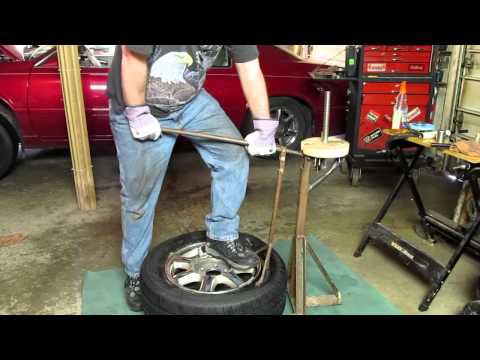 That’s the only way to avoid more severe tire damage or higher repair costs. You can take different measures to help determine if there’s a leak and what the cause may be.
That’s the only way to avoid more severe tire damage or higher repair costs. You can take different measures to help determine if there’s a leak and what the cause may be.
The tire pressure monitoring system (TPMS) gauges the amount of air in your tires. If your TPMS is lit, it may indicate that one of your tires is deflated. Re-inflate your tires and observe the TPMS sensor for the next week. If the light reappears, you are most likely dealing with a slow leak.
Use waterIf you aren’t able to read your TPMS sensor, you can simply use water and liquid soap to test. Mix the liquid soap with water in a spray bottle and spray the entirety of the tire. While you do this, look for a spot where bubbles from the soapy water begin forming. This is how you know where the puncture is on the tire.
Manual pressure readingsEven if your car has a TPMS sensor, it is still important to manually check your tire pressure weekly.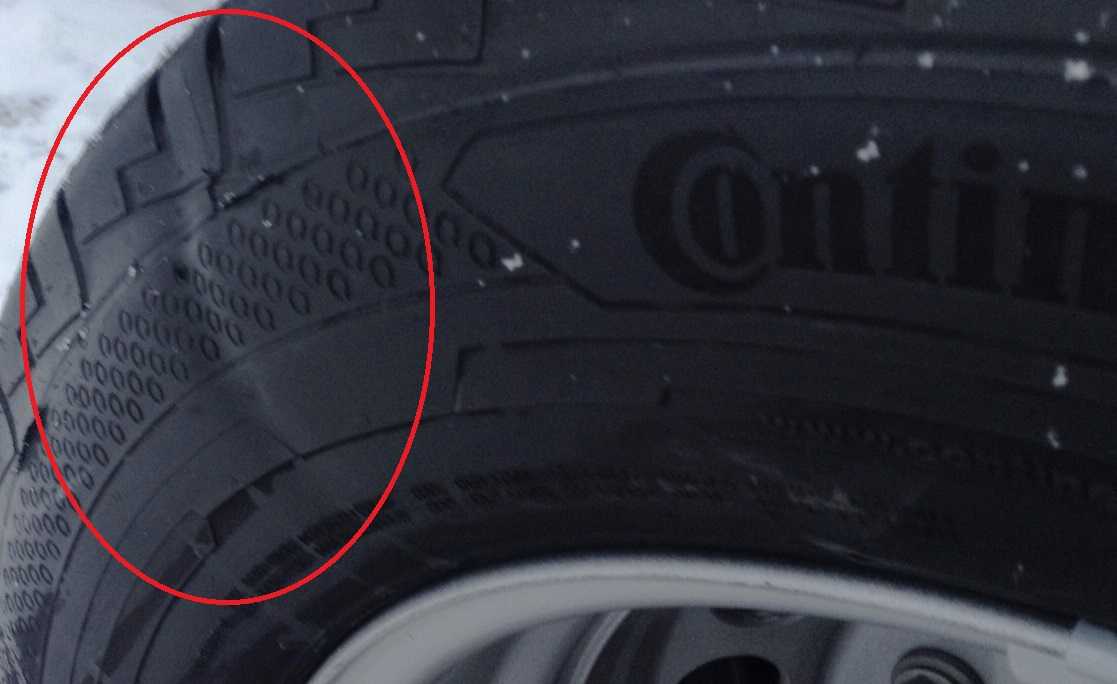 If you consistently notice that one of your tires constantly has lower pressure, you are most likely dealing with a slow leak.
If you consistently notice that one of your tires constantly has lower pressure, you are most likely dealing with a slow leak.
Once you detect a leak, your next step should be to call your local Jacksonville tire shop. It is important to address the issue immediately to avoid driving in unsafe conditions or putting your vehicle at risk for more severe damage.
Some vehicles may also require a valve replacement if their leak was caused by valve stem damage. If the puncture is relatively small and caught early, it may be repaired using plugs or patches. Patches are typically used for smaller holes, whereas bigger holes require plug insertion. When performed by a professional, plugs and patches can be permanent solutions.
In some cases, a patch is only a temporary solution, and tire replacement may be necessary. This is typically recommended if the tire cannot be patched, which is why it is best to solve the issue before the damage worsens.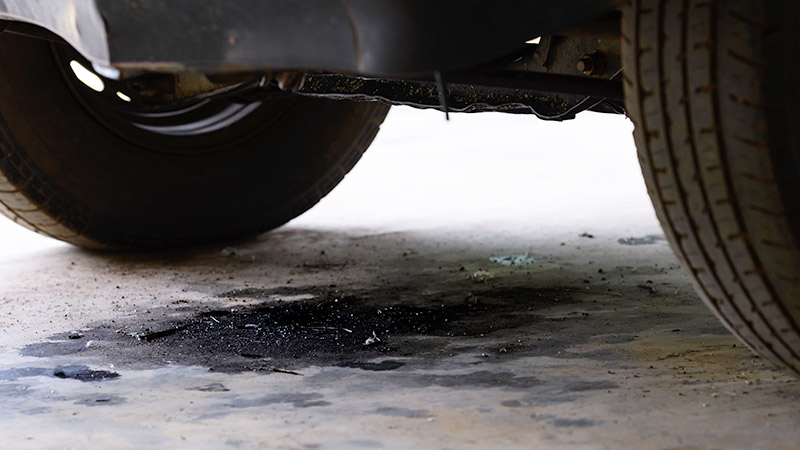 It is recommended that the entire tire be replaced if holes are located near the tire’s sidewall.
It is recommended that the entire tire be replaced if holes are located near the tire’s sidewall.
Save time and money at a big box dealership and choose Big Chief Tire for all your vehicle repair needs. Our mechanics will provide you with the perfect tire type and size match for your car so you can drive safely and issue-free on the road. Make an appointment today at one of our four Jacksonville locations.
A slow leak in your tire can be difficult to detect at first, especially if the tire’s rubber is undamaged or if there is no nail protruding through the hole you have made. While this may eventually result in a flat tire, it does so more gradually than a sudden explosion.
This type of issue can arise even with a new tire or car, but it is also a typical repair that can be done at home sometimes. However, home repairs are not always viable, particularly when the rims are damaged.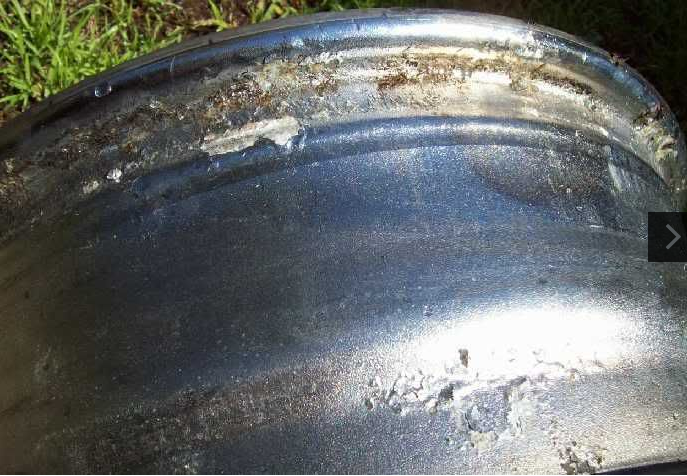
Read more: 7 signs of a bad or faulty alternator
In this article, the following questions will be answered:
So, let’s dive in!
Contents
A gradual tire leak isn’t only an issue. Low tire pressure can be caused by a leak. Not to mention that driving on a tire with insufficient air pressure for an extended period of time might result in increased tire damage or even a dangerous burst. The following are the causes of slow tire leaks:
The following are the causes of slow tire leaks:
It’s a common misperception that a flat tire means a flat tire immediately. However, in many circumstances, the object that caused the flat tire becomes trapped in the tire, preventing the air from quickly leaving. A flat tire, like any other type of tire leak, should not be ignored. The object either wears out or works its way out of the tire at some time.
Damage to the area where the tire bead meets the rim is another typical cause of slow tire leaks. The motorist frequently causes this form of damage by hitting the curb, experiencing a bump at a fast speed, or hitting those dreadful potholes! The impact bends the wheel’s metal surface, which might cause the tire to separate from the mounting surface.
Worn or damaged valve stems are the third most prevalent cause of slow tire leakage. Your valve stems might wear out and leak as a result of time, use, and exposure to the environment.
Your valve stems might wear out and leak as a result of time, use, and exposure to the environment.
Read more: Does car upgrade affect the warranty?
Because a leak will cause the PSI to drop, a built-in tire pressure monitoring system, or TPMS, may warn you to lower pressure in one of your car’s tires. If your car lacks such technology, you may sense a difference in the ride quality when driving. When stopped, a visual inspection can reveal that the tire is losing air (or gas in the case of nitrogen-filled tires) and is beginning to flatten. However, the source of the slow leak must be identified before a repair can be carried out.
A pinhole in the tread or sidewall may be the reason for a gradual leak if a complete investigation of a leaky tire, which will most likely necessitate removal from the vehicle, does not reveal a nail or hole. However, the tire should not be the issue.
It’s possible that the air valve stem is leaking and needs to be changed, or that the tire bead (where it joins the wheel) isn’t correctly sealed to the rim (a common problem in areas where road salt is used which can attack the metal surface of the rim). Before repairing a slow leak, use soap and water, or just water, to find the cause. In a spray bottle, combine liquid soap and water and spray all sections of the tire tread, sidewalls, valve stem, and opening (with the cap removed) as well as along the rim on both sides with the soapy water until bubbles begin to form.
Before repairing a slow leak, use soap and water, or just water, to find the cause. In a spray bottle, combine liquid soap and water and spray all sections of the tire tread, sidewalls, valve stem, and opening (with the cap removed) as well as along the rim on both sides with the soapy water until bubbles begin to form.
Remove the tire and wheel from the car and soak them in a tub of water to locate a leak. At the leak, bubbles form. Ride parts one at a time if the tub isn’t big enough to submerge the full tire.
Pinholes and minor holes in the tread can be plugged or repaired to prevent leaks. Large punctures are impossible to repair, and slight damage to the sidewalls or shoulders (the point where the tread and sidewall meet) usually necessitates a new tire purchase. Leaky valve stems and inserts (the tiny valve itself in the hose) can be replaced as well.
If the slow leak is caused by the wheel not being well seated on the tire, the leak can occasionally be stopped by removing the tire and applying a bead sealant.
Read more: How Much Does an Alternator Replacement Cost?
It is vital that you have your tire diagnosed as soon as possible by a professionally qualified tire store or mobile tire repair service. In the event of a flat tire, a tire repair kit may be used to maintain the tire correctly inflated until it can be fixed. After that, the leak should be properly repaired with a tire repair kit that includes a hardened rubber shaft and a repair unit.
A professional tire technician can usually replace a damaged valve at a low cost if the leak is caused by a damaged valve. In some circumstances, though, the tire may need to be replaced. A tire technician may be able to reapply and reseal the tire using a bead sealer if the leak is caused by a damaged wheel. If the wheel is significantly broken, though, you may need to replace it yourself.
One of the major causes that keep you stranded by the side of the road is a slow leak in your car tire. However, with this article am sure you are now ready to battle any problem that looks like this as you can now identify the leaks and can even prevent what causes the leak. The most important thing is to know how to fix your car tire leak.
I hope this article was helpful, if so, kindly share it with others so they can also benefit. Thanks for reading, see you around!
A slow leak tire is a tire with a small hole through which air escapes.
There is no definitive answer to this question, as the best place to repair a tire with a slow leak depends on the specific situation. However, some general tips that can be helpful in fixing a slow leak tire include using sealant and checking tires for flat tires.
However, some general tips that can be helpful in fixing a slow leak tire include using sealant and checking tires for flat tires.
If you notice a slow leak from a tire, it is important to take action as soon as possible to prevent further damage. There are many different ways to fix a slow leak in a tire, so it is important to find the method that works best for you. Some common methods include the use of sealants or patches, air pressure changes and tire replacement.
It is also important to keep an eye on flat tires to determine if there is a more serious problem with your vehicle that needs attention. .
There is no set time for how long it takes to fix a slow leak in a tire. The repair process will depend on the severity of the leak, tire size and type, and the tools and skills available. Some factors that can affect how long it takes to fix a slow tire leak, include: whether the tire is being used;
tire age;
how badly the leak damaged the tire;
is there debris inside the tire; and
experienced tire repairman. In general, however, most slow leaks can be repaired within a few hours if necessary. Slow leaks are usually caused by air escaping from one or more of your tire valves. This air can cause that your vehicle will lose power and make a loud noise while driving. If you notice that one or more of your tires are rapidly losing air, it is important to take action as soon as possible. Here are some tips to fix a slow leak: Check all four tires for signs of leaks, including on each valve stem. One of the common mistakes people make when trying to fix a slow leak is that they assume that only one particular tire is causing problems. It is important to check all four tires for signs of leakage, including on each valve stem, to determine which one may be slowly letting air out. If you find signs that one particular tire is slowly leaking air, try replacing that tire before doing any other repairs. Remove any obstruction to air flow in and out of your tires, including pieces of metal, plastic bags, etc.
In general, however, most slow leaks can be repaired within a few hours if necessary. Slow leaks are usually caused by air escaping from one or more of your tire valves. This air can cause that your vehicle will lose power and make a loud noise while driving. If you notice that one or more of your tires are rapidly losing air, it is important to take action as soon as possible. Here are some tips to fix a slow leak: Check all four tires for signs of leaks, including on each valve stem. One of the common mistakes people make when trying to fix a slow leak is that they assume that only one particular tire is causing problems. It is important to check all four tires for signs of leakage, including on each valve stem, to determine which one may be slowly letting air out. If you find signs that one particular tire is slowly leaking air, try replacing that tire before doing any other repairs. Remove any obstruction to air flow in and out of your tires, including pieces of metal, plastic bags, etc.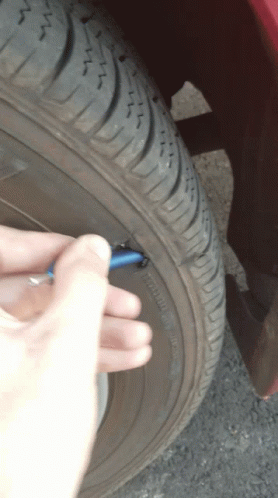
There are several things that can cause a slow leak in a tire. A slow leak can be caused by a hole in the tire, air bubbles, or even a crack in the rubber. Here are some tips to fix a slow leak: 1. Check for holes and cracks in the tire. If there is an obvious hole or crack, fix it as soon as possible. This will prevent air leakage and cause the tire to run even slower. .3. Remove air bubbles with a pump or syringe. Be careful not to puncture the tire! 4. Replace any damaged tires as soon as possible to avoid further damage and loss of speed.
If you've ever had problems with your car losing power when driving on winding roads, then you know how important it is to properly inflate your tires so that you don't find yourself in a difficult situation somewhere far from home, which can easily happen if one of your tires will deflate while you're driving...
Fortunately, there are ways to check if one of your tires is slowly deflating without going out and measuring it yourself - all you need is some simple equipment and some knowledge on how it works. ..
..
There is no easy answer when it comes to whether it is safe to drive on a tire with a slow leak. The most important thing to remember is that any time you are driving, even if the tires look to be in good condition, there is always chance of an accident. If you have a slow leak, it is important to take action and fix the problem as soon as possible. Here are some tips to fix a slow leak:
 There are many different tools available online or in hardware stores that will help you fix small leaks quickly and easily. Just be careful when working with these tools - never force anything into place and always wear protective equipment such as gloves and goggles.
There are many different tools available online or in hardware stores that will help you fix small leaks quickly and easily. Just be careful when working with these tools - never force anything into place and always wear protective equipment such as gloves and goggles. If you drive regularly, it is important to check your tires for leaks. Leaks can cause your vehicle to lose gas and even damage a tire. inside the tire onto the valve stem and see if any fluid or debris is leaking out of it. Finally, use a pressure gauge to measure how much air is still in the tire.
There are several signs that your tire may be leaking slowly. One sign is that you notice a decrease in the amount of air your tire can hold, or if you see fluid leaking from the tire. Another sign is trouble starting vehicle due to low tire pressure. If any of these signs are present, it is important to take action and repair the leak as soon as possible. There are several ways to fix a slow leak in a tire. You can try using an air pump to inflate the tire until it reaches maximum pressure, or you can replace the entire tire with a new one. If any of these solutions do not work, you will need to take What to do next and repair the leak yourself. In any case, repairing a slow tire leak is important for your vehicle to continue driving safely.
There are several ways to fix a slow leak in a tire. You can try using an air pump to inflate the tire until it reaches maximum pressure, or you can replace the entire tire with a new one. If any of these solutions do not work, you will need to take What to do next and repair the leak yourself. In any case, repairing a slow tire leak is important for your vehicle to continue driving safely.
There are several things you can do to prevent your tires from leaking slowly. First, make sure your tires are properly inflated. Excessive tire pressure can cause them to burst, resulting in slow leaks. Second, regularly monitor your tire pressure and adjust as needed. Third, inspect your tires for signs of damage or wear and replace them if necessary. Finally, use a leak detection system to help identify and repair any slow tire leaks before they become serious problems.
If you have a slowly leaking tire, there are a few things you can do to fix the problem.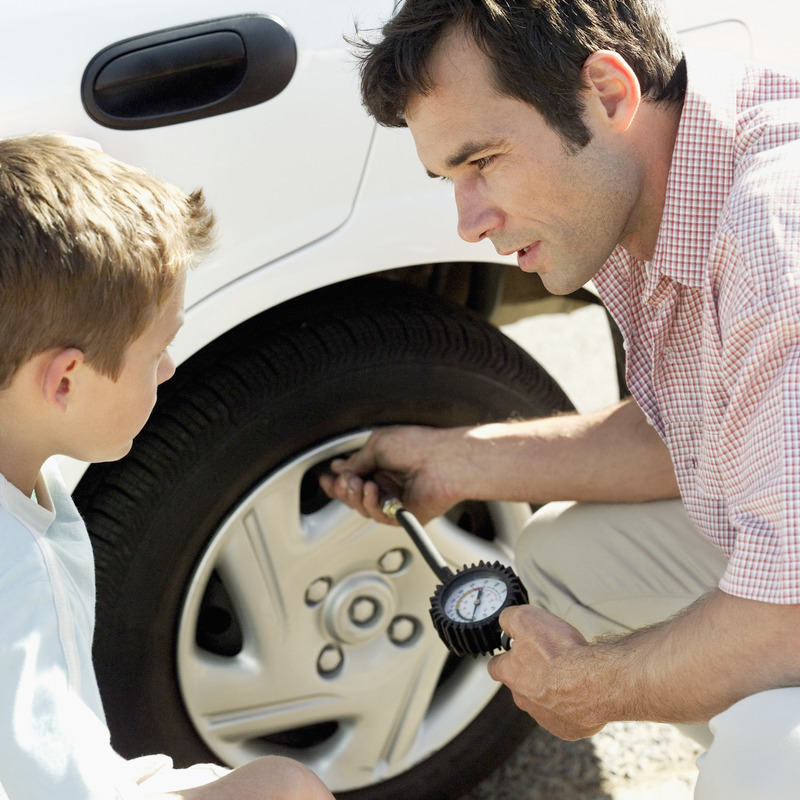 First, make sure your tire air pressure is correct. If it isn't, you may need to add air to the tire. Next, check for cuts or tears on the tire casing. If there are any, you will need to repair them before continuing. Finally, inspect the area around the tire for any objects that may be obstructing airflow. Remove these objects if necessary and repeat try.
First, make sure your tire air pressure is correct. If it isn't, you may need to add air to the tire. Next, check for cuts or tears on the tire casing. If there are any, you will need to repair them before continuing. Finally, inspect the area around the tire for any objects that may be obstructing airflow. Remove these objects if necessary and repeat try.
There are several ways to stop a slow leak from a tire. One of them is to use tire sealant. The sealant can be used both inside and outside the tire. It can be applied with a syringe, spray gun, or even by hand. you need to wait for it to dry before driving. If the leak is small, you may only need to apply the sealant once or twice. If the leak is more severe, you may need to apply it multiple times over several days or weeks.
One of the causes of tire pressure loss is the penetration of air molecules right through the rubber because the gas inside the tire tends to equalize pressure with the outside.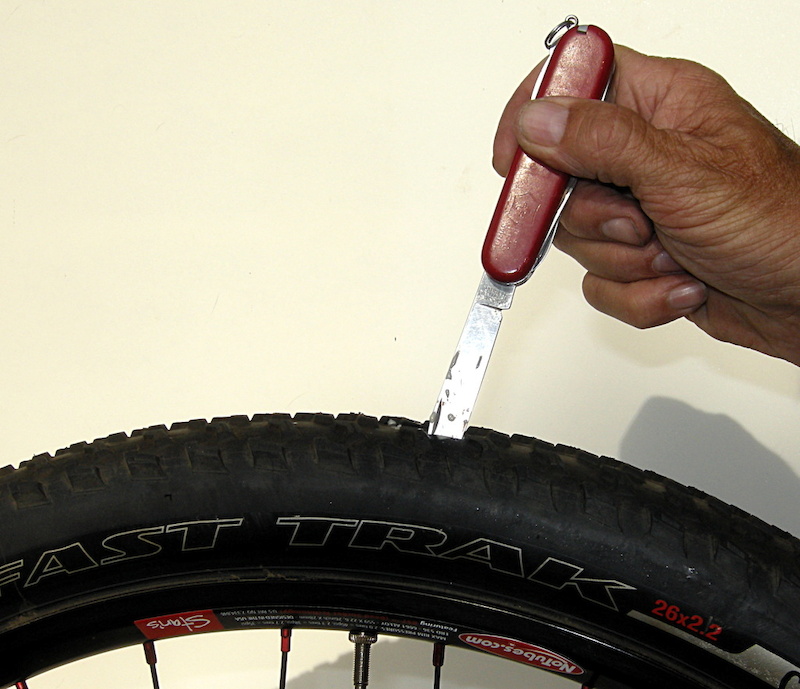 This will happen whether the bus is in use or stored.
This will happen whether the bus is in use or stored.
If parked tires lose air faster, this can be caused by always cold . The tires on the drive car are Flex and Heat Way, which softens the rubber and can freshen up the bead seal and keep it tight.
Approximately 1-3 psi per month is normal for air loss, but you should still check inflation readings frequently and re-fix tires. Neglecting tire inflation for 6 months can take away 6-18 psi, and with the most commonly recommended rate of 30-35 psi, that's a big loss.
A good rule of thumb to remember is that your tires lose at about one PSI every month after you fill them with , so checking every month can help you make sure they are always inflated to the proper pressure .
Yes, Usually you need to inflate your tires in cold weather . As we will explain, low temperatures often mean low tire pressure, and low tire pressure can mean dangerous driving conditions.
As we will explain, low temperatures often mean low tire pressure, and low tire pressure can mean dangerous driving conditions.
In hot weather and highway conditions, the air temperature inside the tire rises by about 50 degrees. This increases the pressure inside the tire by about 5 psi. The burst pressure of the tire is about 200 psi .
If you have standard passenger tires (ninety percent of vehicles do) the lowest tire pressure you can normally ride with is 20 psi (PSI). Anything under 20 psi is considered a flat tire and puts you at risk for a potentially devastating blowout.
If there are no stickers, you can usually find information in the owner's manual. Normal tire pressure is , usually between 32 ~ 40 psi (psi) when they are cold. So make sure you check your tire pressure after a long stay and you can usually do it in the early morning.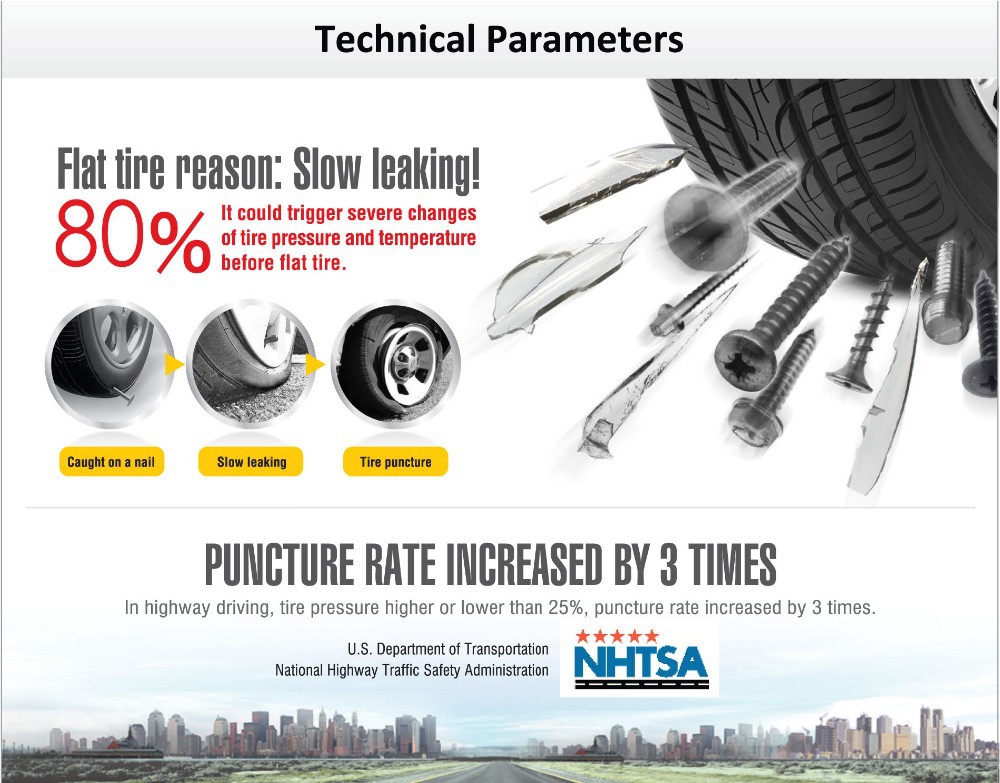
Once the tires are properly inflated, the light may go off after you have driven a few miles . If the light does not turn off after about 10 miles, the TPMS may need to be reset as instructed in the vehicle owner's manual.
If not used, tires last 6-10 years , depending on storage conditions and environment. … The National Highway Traffic Safety Administration (NHTSA) and official manufacturers suggest that a tire is only 100% usable until it is 5-6 years old.
When left in the garage or outside, vehicle tires tend to deteriorate. That is, even if they are new, they will start aging ahead of time and develop problems. These include deflation, warping, rotting, flatness, and more.
Driving with a slow leak in a tire is potentially dangerous because it can cause a flat tire. Once the tire becomes flat, it can become an explosion hazard. … One way to check for a leak is to listen near the suspicious tire. Sometimes you will be able to hear pressurized air escaping from a small hole in the tire.
Once the tire becomes flat, it can become an explosion hazard. … One way to check for a leak is to listen near the suspicious tire. Sometimes you will be able to hear pressurized air escaping from a small hole in the tire.
Usually, when the problem is with the stem of your tire valve, you will notice a consistent loss of air in all 4 tires. … Sometimes this is due to wheel corrosion (see #1) and other times it can be caused by debris that got caught in that gap in the wheel seal through the wool.
What are the signs of a slow tire leak?
You may find that your tires are lose pressure or start to drop slightly over time while the vehicle is stationary. This is because rubber is porous, and while not usually enough to cause a problem, air molecules can slowly make their way through the rubber over a period of time.
This is because rubber is porous, and while not usually enough to cause a problem, air molecules can slowly make their way through the rubber over a period of time.
Overfilling your tires can make them more vulnerable to damage. … Excessive air pressure can also distort the shape of a tire, resulting in reduced traction and increased wear and tearing the center of the tire. Depending on the circumstances, repeatedly overfilled tires could wear out faster.
tire pressure is measured in pounds per square inch or PSI; Typically recommended pressure is given by 30 and 35 psi . … Check the pressure first thing in the morning or wait at least three hours after driving; This gives them enough time to cool down.
Higher pressures are generally not dangerous as long as you stay well below "peak inflationary pressure". This number is printed on each sidewall and is much higher than your "tire pressure".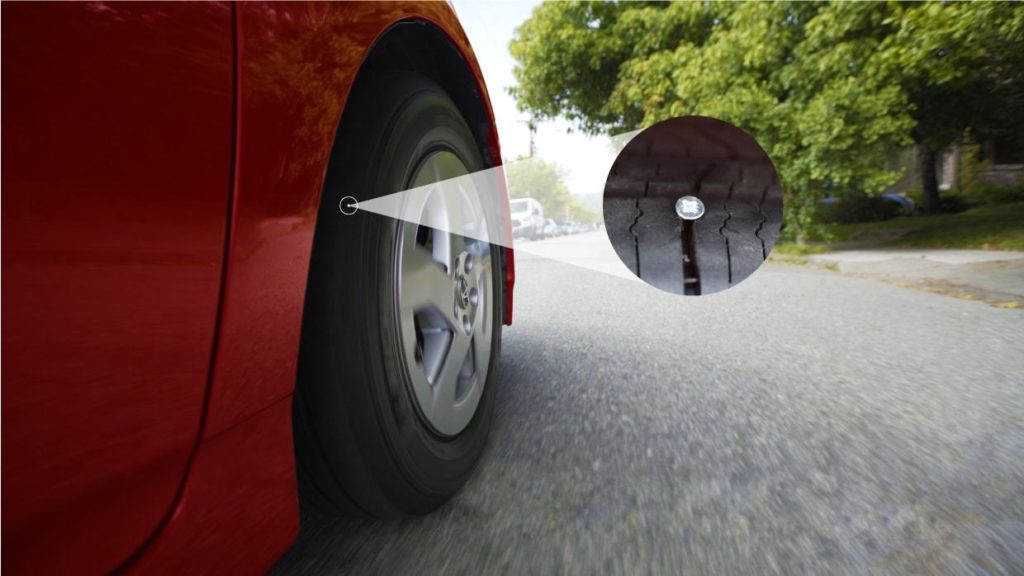 Psi, Gary. So, in your case, I would recommend that you put 35 or 36 psi into the tires and just leave it there.
Psi, Gary. So, in your case, I would recommend that you put 35 or 36 psi into the tires and just leave it there.
So if you fill your tires to 33 psi when it's at 75 degrees and it drops to 25 degrees at night, your tires will be at 28 psi. This is too low . Most tire pressure monitoring systems alert you when your tire pressure drops by about 10 percent. … you won’t notice any difference in tire wear, handling or braking.
no. However, it may be necessary to walk a short distance on a flat tire when dragging to the side of the road. But driving on a flat tire is a surefire way to put your passengers at risk and seriously damage your vehicle.
Driving with underflanked tires is dangerous. … If the tire pressure is too low, too much of the surface area of the tires touches the road which increases friction.